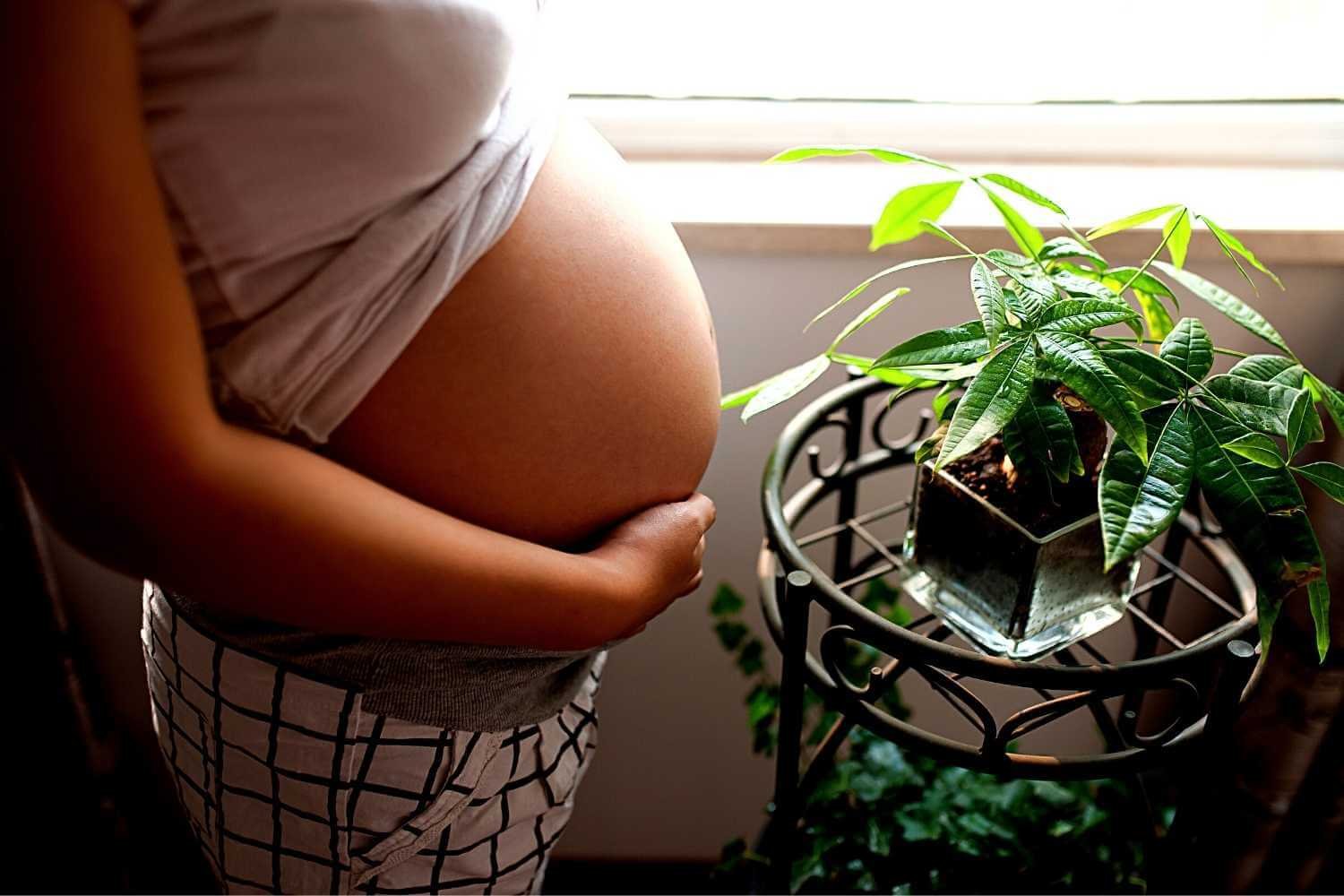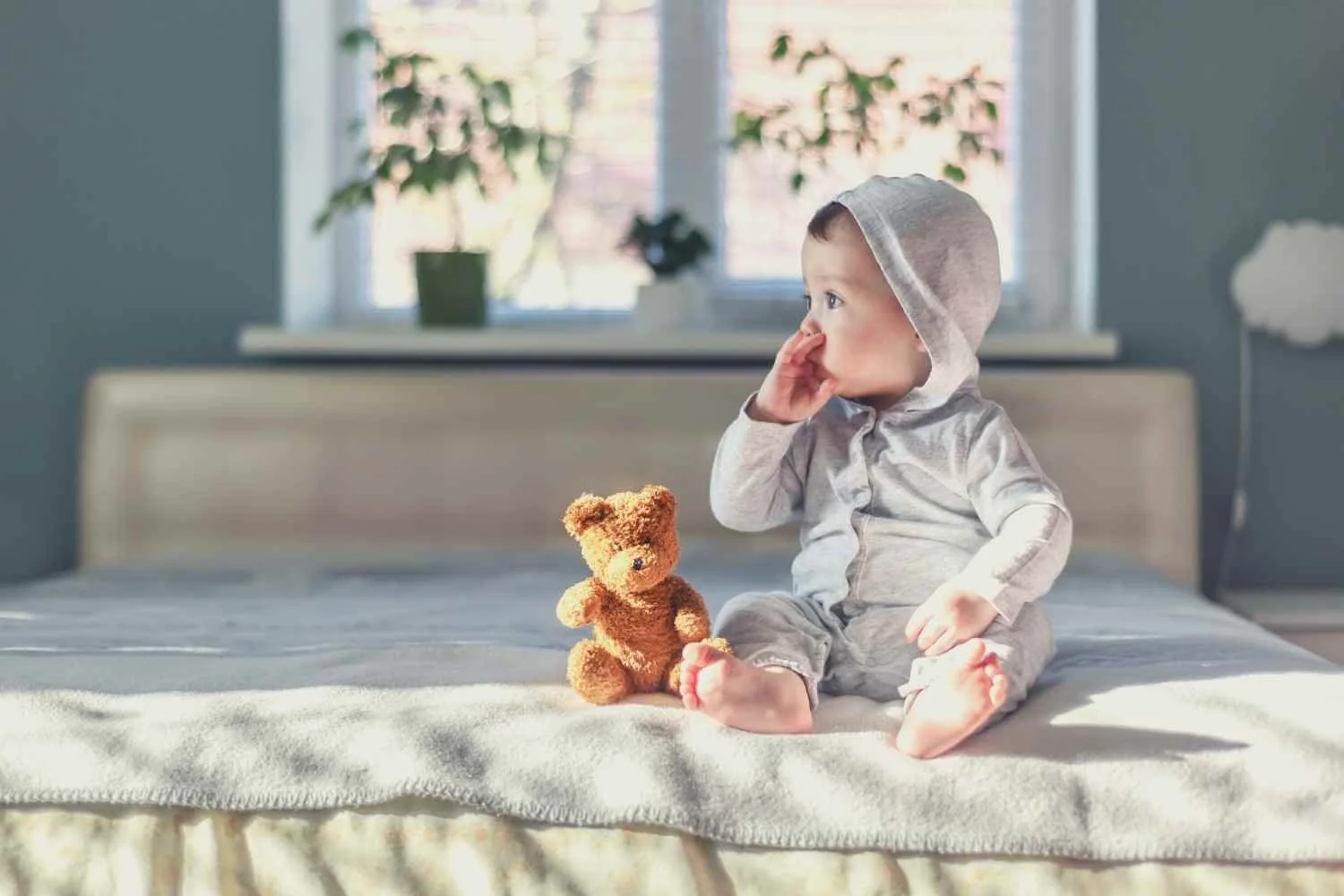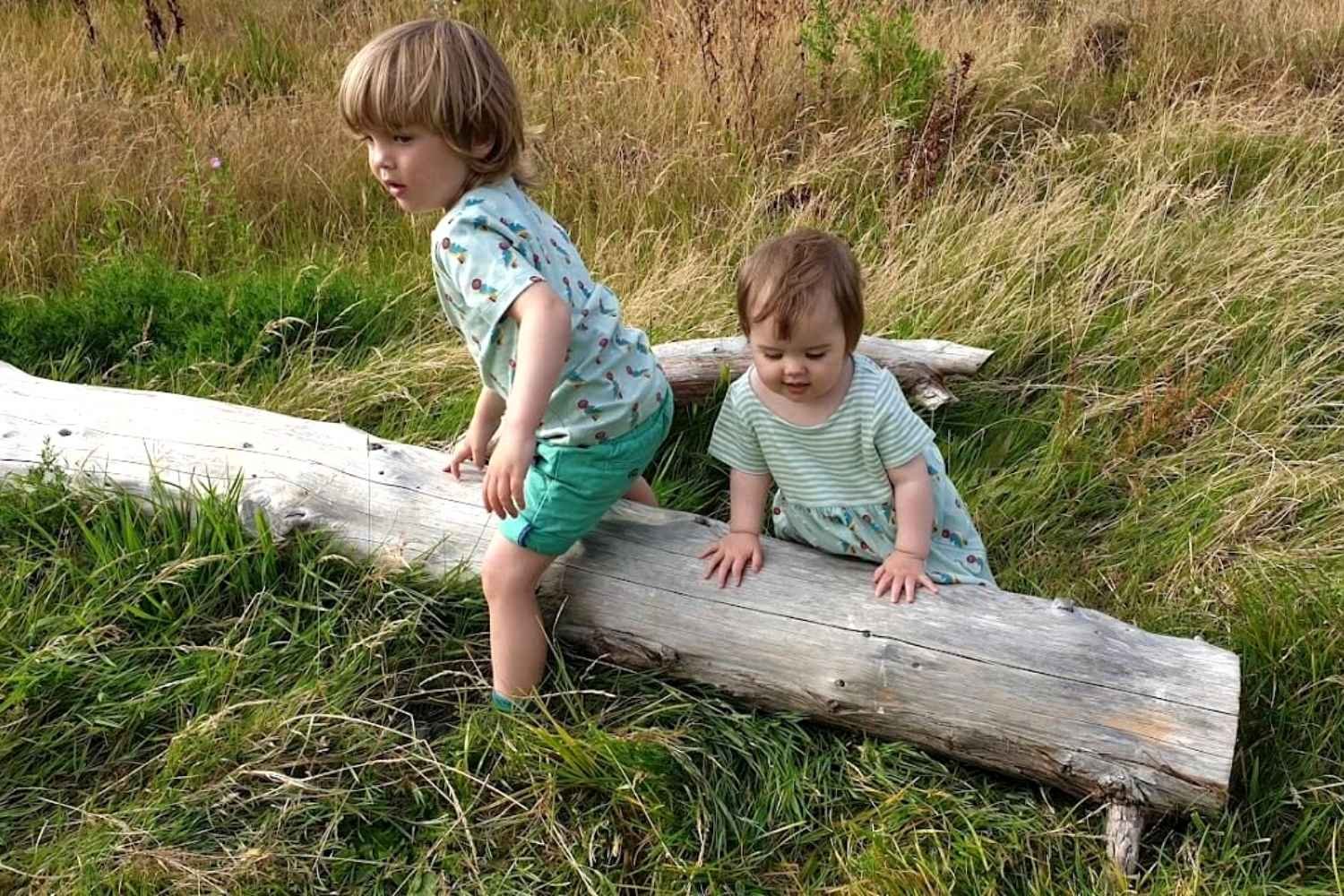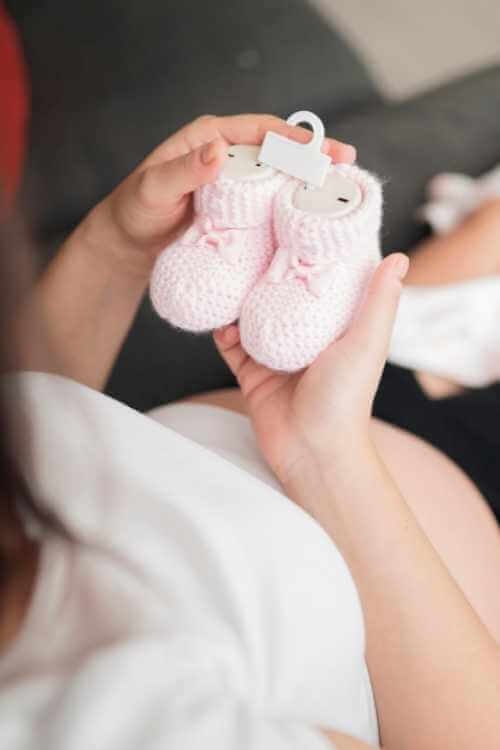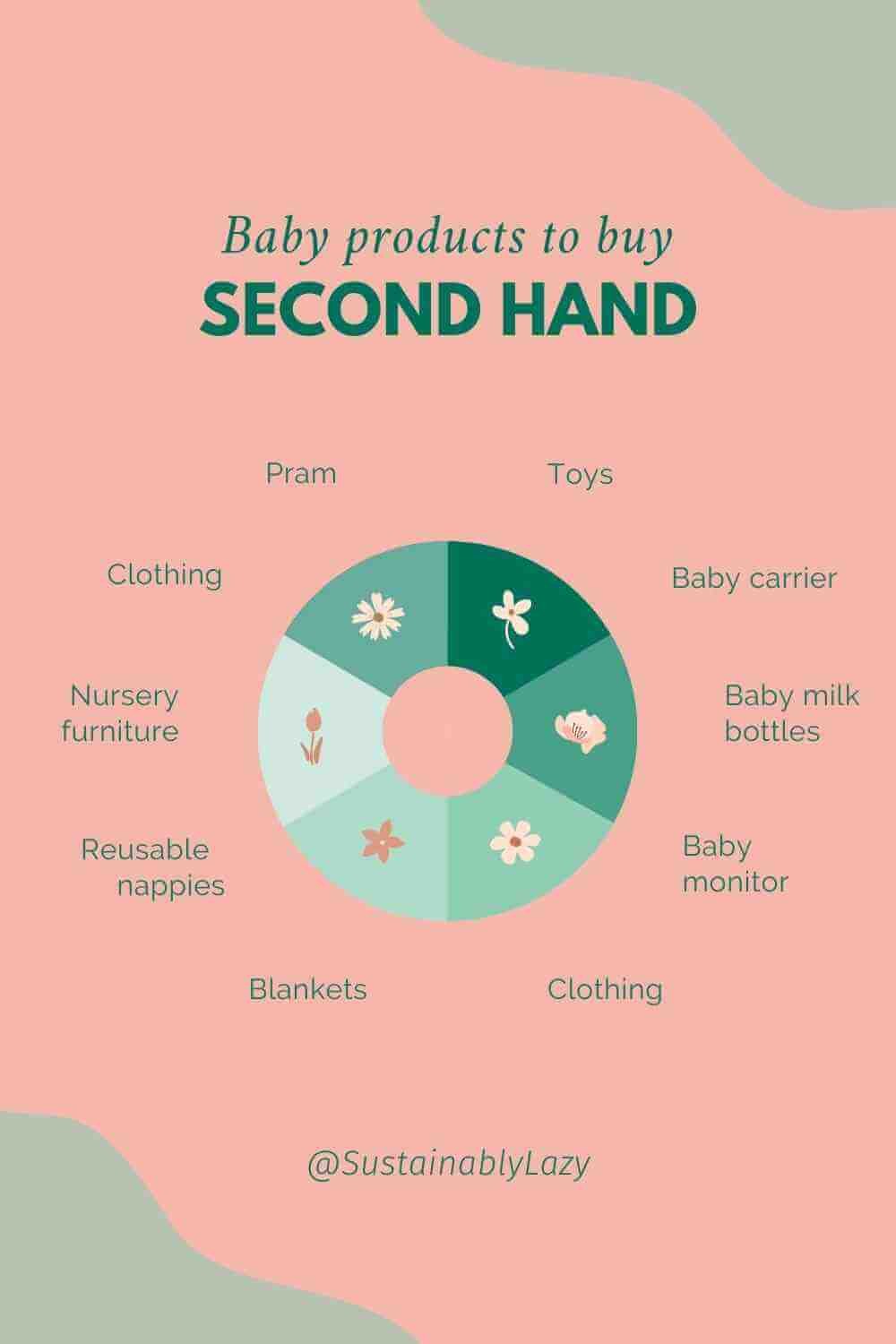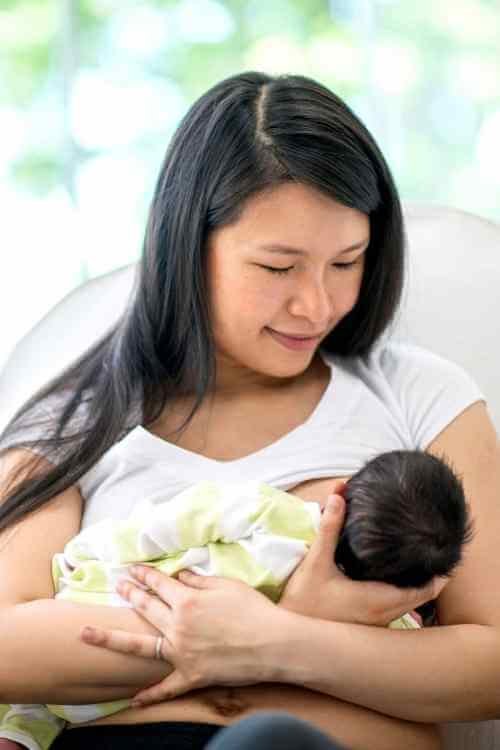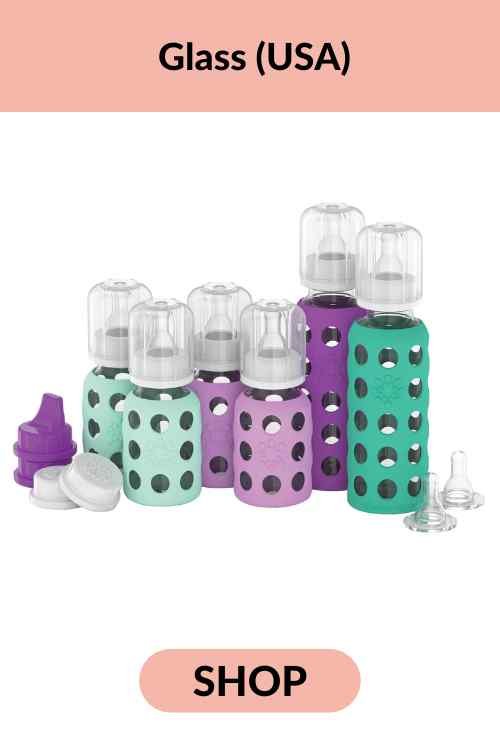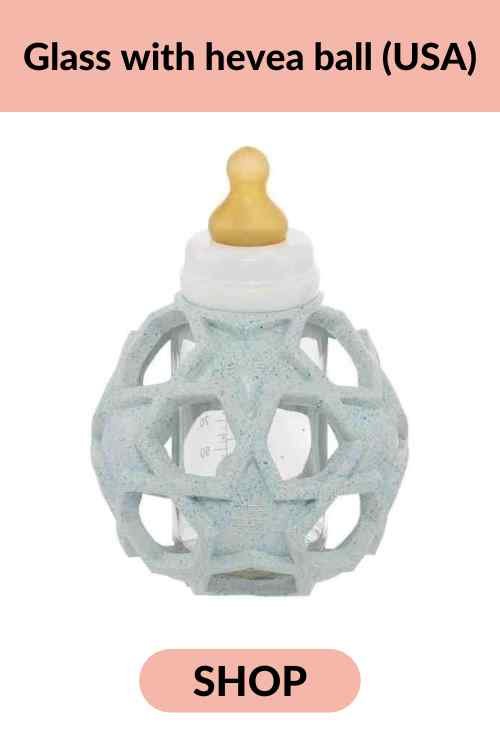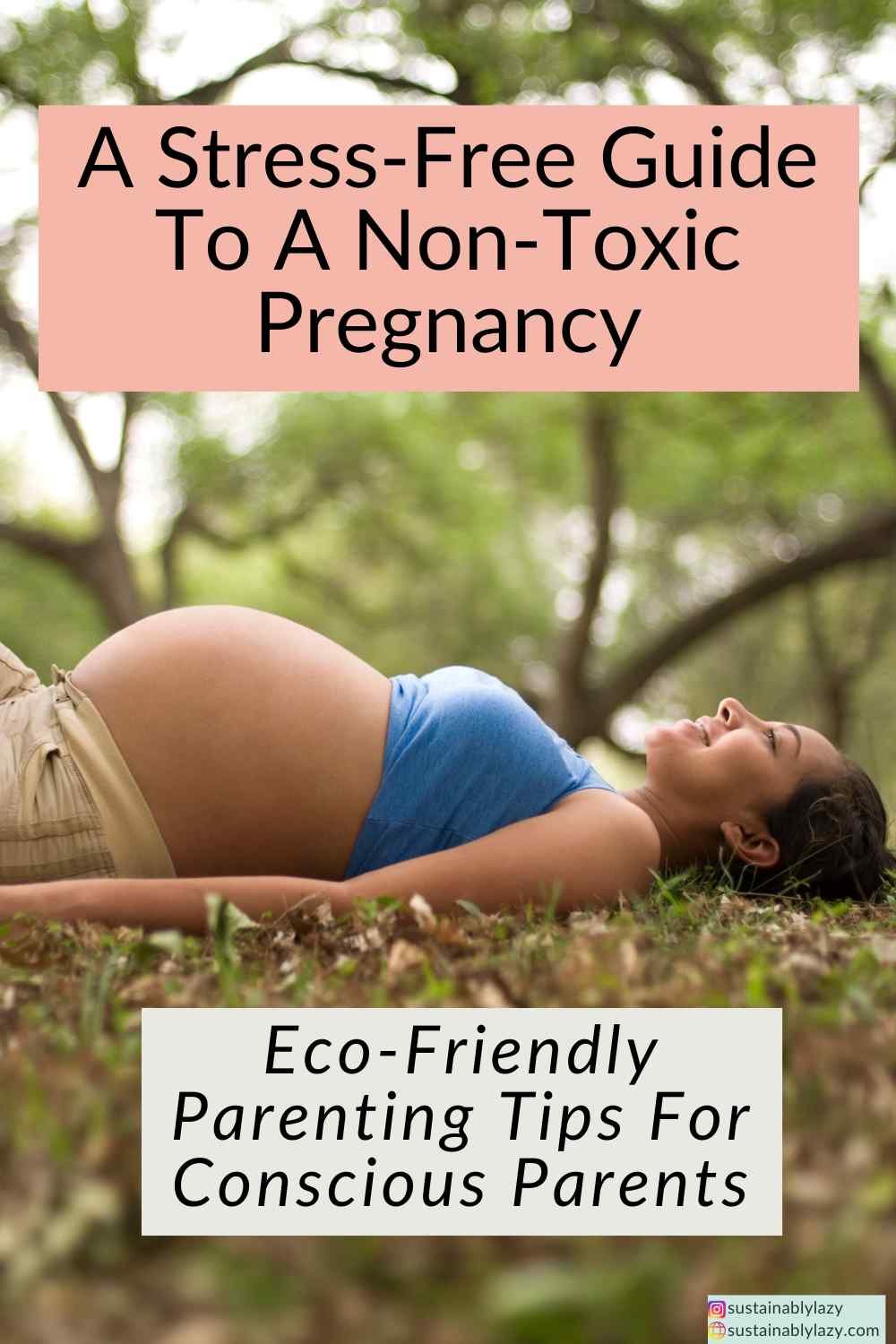A Stress-Free Guide To An Eco-Friendly + Non-Toxic Pregnancy
This site uses affiliate links to ethical brands
You’re pregnant? How exciting!
You may be thinking about how to:
choose eco-friendly baby products that are free from plastic
reduce your baby’s exposure to toxic chemicals
raise children in a sustainable, conscious way
First, I want to acknowledge how wonderful it is that you’re here.
Pregnancy is exhausting.
The fact you are trying to reduce your environmental impact alongside growing a human tells me you’re going to do just fine.
Becoming a parent really makes you think about the kind of world you want your baby to grow up in.
Before they are born, you start to realise you’re a role model and all the choices you make matter.
It’s a lot of pressure.
I am not about pressure.
I made this site when I was feeling isolated as a new parent and couldn’t find any eco-friendly parenting blogs that were inclusive. Hopefully, I can make your journey a little bit easier.
In this blog post, I’m going to share tips for having an eco-friendly pregnancy. Pregnancy is different for everyone - some people have mild symptoms while others can be extremely unwell. Please only do what you feel able to do. This blog post is a guide, not a checklist.
COMING UP
Tip 1: A note on mental health
Tip 2: Resisting the urge to shop
Tip 3: What should you buy second-hand?
Tip 4: Organic baby clothes
Tip 5: Renting baby clothes
Tip 6: Conscious pregnancy wardrobe
Tip: 7 Eco-friendly nursery
Tip 8: Preparing for breastfeeding
Tip 9: Organic/vegan formula
Tip 10: Embracing your new body
Tip 11: Sustainable skincare
Tip 12: Reusable products
Tip 1: mental health takes priority
An eco-friendly and non-toxic pregnancy needs to be about balance. Especially if you’re at the beginning of your green living journey.
If you push yourself too hard or try and replace all the potential toxic chemicals in your home at once, your actions may not be sustainable and you’ll end up overwhelmed.
The best thing you can do is work within your limits, make small changes, and prioritise your mental health.
Eco anxiety can make you want to make lots of changes as fast as you can, but adding overwhelm to your fear results in burnout. Trust me, I’ve been there.
There is a reason that disposable products and convenience are so hard to move away from in modern life. We are biologically wired to raise children in communities. Without family and neighbours, we are left with an enormous amount of responsibility on our shoulders.
And frankly, pregnancy makes you feel rubbish. All the time. Throw in a sibling and every day can be a struggle.
If you are pregnant, it is essential that you make self-care and emotional wellbeing a priority. You are not inadequate if you cannot do it all so please don’t feel ashamed if you end up using more disposable plastic than normal.
It is hard for everyone, you are not alone. Don’t waste your energy on shame and guilt when this phase is temporary.
Instead, focus on what you can do, buy only what you need, and if all you can stomach is a biscuit from a plastic packet then I hope you enjoy it!
Taking a laid-back approach to sustainability and centering your emotional and spiritual health will make it easier to continue making changes that stick.
Before you know it, green living will be your new normal.
Tip 2: Resist the urge to shop
In 2021, the global baby industry was worth a whopping 214.13 billion US dollars - there is nothing eco-friendly about that.
Pregnant women (especially first-time mums) are a target for adverts because no new parent knows what they’re doing.
There is no way to predict what the tiny person growing inside you will be like - what will they sleep in? Will they take to breastfeeding ok? Uncertainties can be scary and corporations target those insecurities so they can take your money.
When my first child was born, he ended up with five different beds (seriously - a few were hand-me-downs though don’t worry!).
And guess what, the only place he wanted to sleep was on me… a sling is definitely on my list of baby products that are actually essential.
Spoiler alert - babies usually don’t sleep long periods of time, even if you buy all the gadgets.
Obviously, you’ll want to get the essentials, like nappies, wipes and clothes but remember it is fine to buy as you go.
(I actually wrote an Instagram post about this point, read it here.)
My best piece of advice for eco-minded parents? Research the fourth trimester so you know what to expect from a newborn baby.
Tip 3: What baby products should you buy second hand
Whether you’re pregnant or not, buying second-hand products is the easiest way to be an eco-friendly parent.
Everything we buy is made using the Earth’s natural resources.
If it is made from plastic then it came from fossil fuels. If it’s made from paper or wood then trees were cut down to make it.
Accepting hand-me-downs and buying preloved is so much better for the Earth and it saves you a lot of money.
Baby products that are safe to buy second-hand:
Pram or pushchair
Stretchy wrap/baby carrier
Clothing, bedsheets, blankets
Cot and nursery furniture
Reusable nappies
Baby monitor
Baby bottles
Toys
Playmat
Baby products it’s recommended to buy new:
Mattresses (I talk more about this in the nursery section)
Car seats
Some breast pumps aren’t suitable to buy used as you can’t clean the internal parts
Tip 4: why you should choose organic baby clothes
Organic is better for the environment and it doesn’t just apply to food.
When clothing is certified organic, it means strict guidelines have been followed to make the item more eco-friendly and better for your health.
For example, normal cotton uses 2,700 litres of water to make one t-shirt. This is usually taken from local drinking water supplies.
The mass production of cotton has dried up the Aral Sea and left millions of people with no safe drinking water. The dust that remains is contaminated with pesticides and is spread around nearby villages when the wind blows
Organic cotton is more eco-friendly because it uses rainwater and requires 91% less water overall (source - Hubbub). Only a small amount of non-toxic pesticides are allowed to be used which means it is also much safer for local communities.
Sustainable living isn’t just about reducing plastic. The world can’t be sustainable as long as the companies that create our products are exploiting people in developing countries.
cotton uses more harmful pesticides than any other crop
As a result of being genetically modified, cotton is susceptible to pests and relies on many insecticides and chemical fertilisers.
These insect-killing chemicals can remain on fibres in the final products.
I already said that organic certification bans most pesticides, but it also forbids other controversial chemicals (like carcinogenic dyes, formaldehyde, and flame retardants) from being used later on in the supply chain too.
You’re probably thinking are toxic chemicals really being used in ordinary products?
Unfortunately, this is not new information. Supply chains are very long and complex, with corporations hiding the overseas factories they use from customers and turning a blind eye to what happens in them.
In conventional cotton clothing, there is no way of finding out whether workers are safe, let alone what chemicals were used in the production.
The most powerful action you can take as a consumer is to keep pushing for transparency by emailing, boycotting, and sharing sustainability knowledge with your friends.
Read my Instagram post on cotton for more information
Toxic Chemicals in children’s clothing
Greenpeace has worked hard to improve the industry for the last ten years so progress is slowly happening.
As part of their Detox campaign, Greenpeace tested 82 items of children’s clothing and found hazardous chemicals in every item. These were all by well-known brands, like Gap and Primark.
Following that study, Greenpeace went on to test children’s clothes by luxury designers, like Louis Vuitton
They found the same toxic chemicals present in designer children’s clothes too, which really makes you question what you’re paying extra for.
Oh, and the majority of designer clothing was made in the EU, mainly Italy, with only a small number produced in China.
I don’t know about you, but I don’t want these chemicals being released into the environment and I certainly don’t want them touching my baby’s skin.
Natural baby clothing
The solution to all the environmental and social justice issues in fashion is to choose organic when you’re buying new baby clothes.
I’m totally aware that buying organic isn’t possible for everyone because it often comes at a higher cost.
As second-hand clothing will have been used and washed, it’s likely that any harmful chemicals will have been washed away so choosing preloved clothes is a safe choice. It is also an environmentally positive choice because you are using what already exists.
There are lots of places to buy second-hand clothing, but one of my favourites is eBay because you can find bundles, you can bid on auctions starting at 99p and you can send offers.
https://www.ebay.co.uk/sch/i.html?_from=R40&_nkw=baby+clothes&_sacat=0&rt=nc&LH_ItemCondition=3000
RECOMMENDED ORGANIC BRANDS:
Tip 5: rent organic baby clothes
As you can see, there are many benefits to organic clothing, however, babies grow fast and it can get quite expensive for parents trying to be eco-friendly.
You can get a portion of your money back by selling popular organic brands, like Frugi (UK) or Finn and Emma, but this is still a lot of effort when you’re tired.
In fact, so much of baby clothing is a hassle - storing, selling, posting, buying the next size up before they need it, and finding seasonal clothes.
This is so much harder when you’re a working parent, are neurodivergent, or don’t have a lot of spare time.
This is where renting organic baby clothes comes in.
The benefits of renting organic baby clothes
Saves money - you get organic clothing at a lower cost
Eco-friendly - second-hand clothes are better for the environment
Saves energy - you give it back when you’re done
Convenient - you get to swap it when they grow or when the season changes
Enjoyable - you still get the online shopping buzz when you’re browsing outfits
Where can you rent baby clothes in the UK?
Started by a mum after her second child was born, Borro is a small UK business that rents out baby clothes from 0-12 months.
Borro is different because you don’t have to pay a fixed monthly fee for a set amount of clothes. Instead, each item of clothing has a monthly price and you can choose how many items you want and how long for.
This gives extra flexibility as you can rent what your budget allows.
They stock my favourite ethical brands at Borro (oh how I miss having a squishy newborn to dress); you can choose between beautiful neutrals or colourful prints.
Tip 6: Create a conscious maternity wardrobe
As your pregnant body grows, you’ll want to wear clothes that make you feel good but are comfortable.
You might think you need to rush out and buy a whole new eco-friendly wardrobe, but you really don’t.
There will be some items in your wardrobe that accommodate a changing figure, either by design (think empire waist dresses, jumpsuits and tunics) or because they are made from fabric that stretches.
Once getting dressed starts to become a challenge, put everything that doesn’t fit in a box and leave nothing but bump-friendly clothing in your wardrobe. Trust me - it’ll save you a lot of time in the morning.
It’s possible you’ll need to buy a few new items, like underwear or over-the-bump leggings, but you should be able to get most other bits second-hand.
For more tips on creating a sustainable maternity wardrobe or if you’d like to know where to buy clothes where to buy sustainable maternity clothes in the UK.
If you’d like me to cover ethical maternity clothes in the USA, let me know in the comments.
Tip 7: Eco-friendly nursery
Many parents enjoy putting together a nursery for their baby; here are some simple tips for keeping your nursery eco-friendly and non-toxic:
Natural mattress
Your typical mattress is made with synthetic flammable materials, like foam, derived from fossil fuels and sprayed with toxic flame retardants. This is probably not something you want your baby breathing in.
While every parent wants their child to be safe, flame retardants pose health risks and no companies actually tell you what chemical has been used (I was always ignored when I emailed popular baby brands to ask).
It has been a legal requirement for mattresses to be fire-proof since the 1970s (when smoking in bed was a cause of fires) so it’s best to assume that they have a fire retardant on unless stated otherwise.
Thankfully, certain materials, like wool, are NATURALLY fireproof so they don’t need added chemicals.
This really worried me when I was pregnant, but I sleep so much better now knowing my children are sleeping on non-toxic mattresses each night.
Natural beds are more expensive but they can last your child many years so it’s a long-term investment.
Non-toxic mattresses:
Naturepedic (US)
Avocado mattress (US)
Organic bedding
If you’d like to get bedding that hasn’t been grown with toxic pesticides look for GOTS-certified organic cotton.
This certification also has strict criteria regarding human rights, so you know your baby’s sheets weren’t made using forced or child labour.
Organic sleeping bags:
Frugi (UK)
Kite (UK)
Woolino - organic cotton or wool (USA)
Nest (US)
Quincy Mae (USA)
Aden and Anais (US)
Organic swaddle blankets
Finn and Emma swaddle (USA)
Avery Row (UK)
Piccalilly (UK)
Organic bed sheets:
Little Green Sheep (UK)
Baby MORI (UK)
Avery Row (UK)
Avocado (USA)
Naturepedic (USA)
Nest (USA)
Natemia - pack and play (USA)
Natemia - crib (USA)
Plastic-free toys
By now you’re aware that plastic is bad for the environment, but did you know it also leaches potentially harmful chemicals?
Yeah… it isn’t the best choice for a developing baby that explores the world with its mouth.
You’re probably aware that toys in the EU are having to phase about BPA and you’ll have seen them labelling their products “BPA-free.” But did you know that BPA has simply been replaced by similar chemicals (BPS and BPF), which are much less researched?
You can avoid these substances, along with PVC and phthalates, by choosing toys made from natural materials, or safer plastics.
Read more:
Second-hand furniture
If you’d prefer to get sustainable nursery furniture, the most eco-friendly choice is to use what already exists. Have a look at local buy and sell groups, Facebook, Gumtree, and Preloved for second-hand furniture (obviously ensuring products, like cots, meet current safety guidelines).
If you can’t find what you need or would prefer to buy new, look for solid wood that comes from locally-sourced trees. Materials like MDF and plywood usually contain formaldehyde which can off-gas for years.
Low VOC paint
That new paint smell actually consists of VOCs, which stands for Volatile Organic Compounds. These are gases that come off the products your buy and building materials (like wood and glue). Some VOCs are harmful to your health, others can cause eye and throat irritation. It is important to reduce the VOCs in your nursery by using eco-friendly paint that is low in VOCs.
Non-toxic paints:
ECOS (made in the USA, delivers internationally)
Auro paint (UK)
Osmo paint (UK)
Tip 8: Prepare for breastfeeding /chestfeeding
Not everybody is able to or chooses to breastfeed, but if you want to, then it is a good idea to educate yourself on the basics and the fourth trimester while you’re still pregnant.
Breastfeeding can be a challenging skill to learn, not just for the parent, but the baby too. Unfortunately, support for new parents is almost non-existent in many places. Without the support they need, many mothers don’t manage to breastfeed as long as they hoped to.
One study found that ceasing breastfeeding when a mother isn’t ready can put them at higher risk of mental health problems.
I almost wasn’t able to breastfeed both of my babies due to a very premature birth and a missed tongue tie with one and then a crash c-section with the other. Although my second birth was positive, in my experience, it was harder to breastfeed after a caesarian because the recovery was much harder.
Knowing what to expect by learning what the first six weeks are like can prepare you for breastfeeding.
Learning the breastfeeding basics
I strongly feel that the only reason I was able to breastfeed my second baby was because I already had the knowledge (although I still needed a bit of support getting the position right).
It is hard to imagine what it is like before your baby is born.
I’d recommend learning about:
The fourth trimester
Breastfeeding positions
How often to breastfeed a baby
Cluster feeding and fussiness
The first week feeding a newborn
Signs a newborn is getting enough milk
Knowing the signs of tongue tie - because midwives and health visitors normally miss this (they aren’t trained!) or say something like “It isn’t bad so we’ll just leave it.” The next thing you know, breastfeeding hurts or your baby begins to lose weight…
When breastfeeding isn’t right for you
If you do not want to breastfeed/chestfeed or are unable, that is ok. There are a hundred reasons why breastfeeding isn’t right for someone. Maybe you’re dealing with trauma, have had a mastectomy, have sensory differences, are on medication, struggle with pumping, or simply don’t want to… there is no need to explain or justify your choices.
I want to be clear that I’ve included breastfeeding preparation in my list as something to research during your pregnancy if it is something that works for you. I’m an advocate for informed choice and believe you can still be eco-friendly and give your baby formula.
Under capitalism, many parents have no support networks, no access to mental health support and often no family living nearby. Society isn’t set up to empower breastfeeding womxn, especially those who aren’t white, cis, middle class and straight.
Inclusive breastfeeding resources
Tip 9: Choosing a Formula
In an ideal world, everyone that wants to breastfeed would be able. Unfortunately, that is not the case and this makes formula milk an essential product for some eco-conscious parents.
While it is all highly regulated in terms of safety and nutrition, some parents opt for an organic formula due to the higher animal welfare, type of ingredients, and lack of additives.
There is also growing demand for vegan and vegetarian formula milk which I will cover in this section too.
Combi feeding
There are lots of reasons parents choose to combi feed. Sometimes a baby needs top-ups for medical reasons, and other times a parent may just want a break. I’m not here to advise on this or judge, I just wanted to make you aware that if you start to give bottles while establishing breastfeeding, your milk supply may start to decrease. Using a breast pump when you give a bottle can help prevent that from happening.
Disclaimer - I am not a medical professional and this blog is just for information purposes. Always check with a health professional if you are changing milk or baby has a health problem.
You can buy baby bottles in stainless steel, silicone or glass to avoid plastic:
why consider Organic formula?
Organic baby formula is made with milk which comes from organically raised cows (or goats) and follows strict rules about what additives can be included.
It is a legal certification so the formula must meet certain criteria.
In the UK and EU, organic farming is certified by the Soil Association and in America, milk is certified by USDA. This is because there are different food standards on both continents. Organic products will have a logo on the packaging.
What makes organic milk different:
Organic milk must come from free-range cows who spend as much time outside as possible. This means they are less prone to stress and disease
Cows must be fed a natural, organic diet. This mainly consists of grass without chemical fertilisers or pesticides (compared to non-organic cows which can be fed genetically-modified animal feed)
The routine use of antibiotics and wormers is forbidden in organic cow and goat milk (growth hormones are forbidden too but this is only a problem in America).
Certain additives and preservatives are banned in organic cow and goat milk, such as GMOs, hydrogenated fats, artificial colourings and preservatives.
Note: organic milk is more expensive and not everyone is able to afford it. Please don’t feel guilty if you can’t - remember all formula milk is strictly regulated and safe to give to your baby.
There is also the matter of the baby milk shortage in the US. It may be hard to get hold of certain brands so consider what is accessible to you if you aren’t able to breastfeed.
Organic formulas in the UK/EU:
Kendamil organic
Hipp Organic
Holle
Organic formulas in the US:
Please note that not all organic formula is approved by the FDA.
Can you buy vegan formula in the UK?
In the UK, vegan formula isn’t currently available. There is one in France called Premiriz that can be imported but it is expensive and the instructions are in French.
You may experience problems in the future if you run out or it goes out of stock, so just be mindful of that if you decide to go with this option. Don’t forget to factor in the delivery fee too.
Is Soya formula vegan or vegetarian?
Is Wysoy vegan?
Nestle have a widely available range of soya formula in the UK. They are not vegan, but one of them is vegetarian.
The tins look similar so be sure to read the tin carefully if you want to vegetarian one - the Soya Infant Formula says “vegetarian” on the front of the packaging. The other one labelled WYsoy contains fish oil and vitamin D derived from lanolin.
I can’t find any information about the source of omega 3 for the vegetarian formula milk. It is listed on the ingredients list as “long chain polyunsaturated fatty acids (AA, DHA).” I’d contact the company directly if you’d like more information.
Soya formulas are not organic, but they are popular with vegan parents who are unable to breastfeed and don’t want to risk importing their baby milk.
If you are considering soya formula because of a dairy allergy, it is worth knowing that the soya protein it is made from has a similar structure to cow’s milk protein and is also a common allergen. If you are concerned about allergies please speak to your health visitor.
Tip 8: embrace your new body
Pregnancy changes your body in ways you won’t expect and there will likely be a change or two you don’t like.
Capitalism relies on people, but especially women, feeling bad about their bodies so they keep buying stuff. Most of the time, that stuff doesn’t even help because what is happening to your body is normal.
Society is not prioritising what is best for expecting mothers. I was never given any information about breastfeeding, the fourth trimester, or cloth nappies, but I was given free samples of Bio-Oil for stretch marks I didn’t even have yet.
What they don’t tell you is stretch marks are genetic - there really isn’t much you can do about them.
Some people like using belly creams because it soothes their stretching skin and can improve elasticity, which is totally fine, but they really aren’t essential (I’ll include the best brands in the next section if you’d like to use one anyway).
I’m very minimalist with my skincare (partly because I’m neurodivergent and struggle with routines) but mainly because I prefer quality over quantity.
I didn’t bother using creams on my bump in either of my pregnancies (unless my skin was feeling particularly dry) and I didn’t get any stretch marks. Whereas my friend used creams every day and still ended up with loads. I did, however, get stretch marks after my second child as I gained weight during the postpartum period.
I know it’s easier said than done, but it really does help to accept that your body is going to change during pregnancy. Changes, like stretch marks, are a sign that your body is doing something miraculous.
Sometimes it’s hard to feel positive about yourself in the age of photoshop and Instagram filters so whenever I’m feeling down, I ask myself what I would say to a friend who was feeling this way. We’re much kinder to our friends than we are to ourselves.
One of the most powerful things you can do is unfollow influencers that make you feel bad about yourself and replace them with positive motherhood accounts and inspiring role models.
Tip 9: eco-friendly skincare
Pregnancy hormones can do all kinds of things to your skin and most of the options on the market aren’t eco-friendly.
You might find you experience eczema, acne or hyperpigmentation. You might be worried about stretch marks or wondering what to use on your baby when the time comes.
Ingredients to be mindful of:
Lots of cosmetics still contain solid microplastics (a common one is acrylic copolymer), liquid polymers and petroleum waxes. Microbeads are only banned in rinse-off products in the US and EU, so are still used in a variety of common products.
Fragrances - not all fragrances are safe for pregnancy (even the natural ones!) and may contain phthalates.
You should be cautious of essential oils during pregnancy as some can induce labour.
Popular mainstream brands are not always cruelty-free or vegan.
Mass-produced and cheap products often contain petrochemicals and hidden palm oil
For baby
The truth is, you won’t need many eco-friendly products for your baby.
When babies are born, it takes their skin a while to adjust to their environment. They often get baby acne, cradle cap and dry skin, all of which usually go away on their own in a couple of months.
What I used:
All I used for the first year is:
Liquid Castile soap to soak my clean reusable wipes
Organic coconut oil for cradle cap
Fragrance-free bar soap for any time baby needed more than water (Ethique sells a mild baby body wash bar if you find soap drying
If you don’t want to use a solid bar, Odylique sells a non-toxic baby shampoo and body wash. - Get 20% off with my affiliate code LAZY20
Non-toxic nappy/diaper rash cream:
Plastic-free option - Ethique bum balm (Global)
Most other products are completely unnecessary unless you have a specific problem.
For Mama/parent
If you want low-maintenance skincare, you’ll be happy to know you can use coconut oil for both your baby and your bump. I always choose Fairtrade coconut oil because corporations, like Supermarkets, often don’t pay farmers fair wages and they get trapped in extreme poverty.
If skincare is a part of your self-care or you’d prefer something less greasy, there are lots of eco-friendly brands that make lovely natural products for expecting parents:
Green People mum balm (UK)
Earth Mama Organics (USA)
Odylique nipple balm and bump balm (UK)
Fat and the Moon (USA)
Tip 10: Consider reusable products
Eco-friendly baby products are becoming more popular, which is good news because it means they are more accessible and there is lots of helpful information available. Here are the most useful reusable products to consider while you’re pregnant:
Cloth nappies/Diapers
While terry nappies are still loved by many, there are plenty of modern reusable nappies available.
All-in-one styles are my favourite because they are exactly like disposables, you just throw them in the wash instead of the bin.
Pocket styles are the most popular because they tend to be more affordable and faster at drying.
Cloth diapers can feel overwhelming when you’re new to it all, but you don’t have to learn all the fancy terms or try every brand. You also don’t have to go full-time with reusables; it is very common to switch between single-use and disposable, particularly in households with more than one child.
Where to try out or buy cloth nappies/diapers:
The Nappy Gurus (UK) - use SUSTAINABLYLAZY for 10% off
The Nappy Lady (UK)
Cloth diapers (US)
Biome (AU)
If you’d like to learn more about cloth nappies, I have a whole section under “parenting” on my site. Here are some popular posts:
Reusable baby wipes
Regular baby wipes contain ingredients which can be harsh on delicate newborn skin. One example is preservatives which are always present when water is an ingredient.
I know, the name “water wipes” is deceitful, isn’t it?
According to the water wipes website, there is “a drop” of fruit extract, however, this contains benzalkonium chloride which is a disinfectant - the same active ingredient that is in Zoflora, just a much smaller amount.
Even in tiny amounts, there is no way I wanted that on my baby’s skin, at the same time, I wouldn’t want single-use wipes with no preservatives in them.
This is where reusable wipes come in. They are so much easier to use than you think and you don’t have to worry about any toxic chemicals in them because all they need is water. Of course, you can use a premade cloth wipe solution if you wish.
You can buy reusable baby wipes, but you could be extra sustainable and make your own from old muslins, flannels, or even old t-shirts.
How to store used cloth wipes:
If you’re using reusable nappies, you can go ahead and throw the cloth wipes in the same bucket.
If you’re using disposable nappies, the easiest way to store reusable wipes is in a wet bag.
How to wash cloth wipes:
Washing reusable baby products is a two-part process involving a separate prewash and then a main wash.
When it’s time to wash your wipes, do a short 30-60 minute long wash in your machine at 60 degrees with half a dose of detergent. This will wash away any bodily fluids that remain in the wipes before the main wash.
If you’re using cloth nappies, you can do the prewash and main wash with them. If you’re not, then you will want to add your prewashed wipes to another load.
This should be fine as long as you’ve got an effective wash routine. Soap-based detergents are not effective at cleaning reusable nappies and wipes. If you are using a detergent with plant-based surfactants, make sure you wash them at 60.
If you would like me to write more about reusable baby wipes, let me know in the comments below.
Reusable water bottle
Since you’ll be drinking for two, hydration is key. You can get eco-friendly water bottles that are made from all sorts of materials, like metal, glass, bamboo, and wheat fibre.
If you’ve got a plastic water bottle at hand already, that works just fine, there is no need to buy something new if you already own one.
However, if you need a reusable bottle or would like a plastic-free one, you can buy them from the following places:
Klean Kanteen (stainless steel) - discount code KLEAN-ELEPHANT115
Zero Waste Store (ceramic and steel)
Reusable breast pads
Reusable breast pads may seem like a postpartum essential, but they are useful if you begin to leak colostrum during pregnancy too. The best ones are made from plant-based materials, like bamboo, cotton and hemp, as these absorb more liquid. They also make nice cushions if you have sensitive nipples!
Where to buy:
The Nappy Lady (UK)
MORI (UK)
Cloth Diaper (US)
Tap to pin this to your conscious Pinterest board!
Sustainably Lazy is making sustainable choices simpler for conscious consumers around the world. If you love what we do, please support our work by sharing this post (tap the red arrow in the bottom corner) or donating what you can towards the website fees. For the price of a cuppa you can help us inspire thousands more people.

